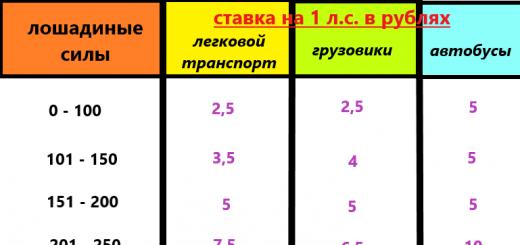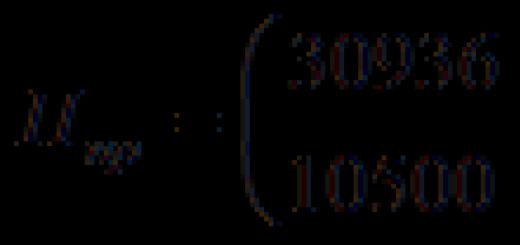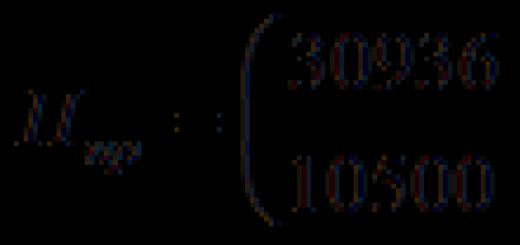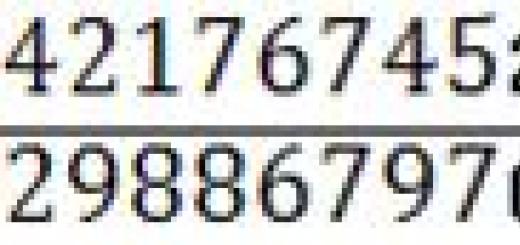What is this song about
In theory, the OSAGO principle is simple: if you only crashed your car, you can throw it into a landfill, or repair it at your own expense, your business. Insurance of your own car under the laws of the Russian Federation is optional (although when buying on credit, the bank will require it). But the law requires you to insure the threat that you pose to other road users. The fate of the pedestrian you hit, or the owner of the car you crashed into, should not depend on how rich or poor you are, whether you yourself survived the accident, and how far is your home from here. Regardless of the answer to all these questions, the victim of your actions on the road must be insured in advance, and at your expense, since you are a source of threat.
This is the theory, and it is the same for all countries where OSAGO operates. It’s worse with practice. The fact is that in America compulsory insurance was first introduced more than 90 years ago, and in Western Europe by the end of the 1940s it had already become ubiquitous. Naturally, over the years, 100,500 different situations have arisen, taking into account which the procedures and rules were finalized. Today's legislation on this issue in developed countries is the product of half a century of grinding and balancing.
How it works in Russia
In Russia, a law obliging car owners to insure themselves first came into effect in July 2003. Since then, it has been continuously revised, in all its key positions. For example, to the simple question "Who should set the OSAGO tariffs?" Over the past 13.5 years, the legislator has managed to give four different answers - perhaps they were all wrong, but today this responsibility has been assigned to the Central Bank. More complex questions in the law often have no answer at all, or it allows multiple interpretations. Therefore, the Russian courts, from the first instance to the Constitutional Court and the Plenum of the Armed Forces, are inundated all the way with claims regarding OSAGO. In 2012 alone, their number in Russia exceeded 311,000. Although with normally written laws, no court would be required to pay insurance. As it is generally not required in order to repair a car with commercial insurance.
There was even a whole stratum of "auto lawyers" - people who buy out the right to bring claims under compulsory motor third party liability insurance from victims of road accidents (beneficiaries). That is, they pay the owner of the damaged car in cash an amount for which he can fix it tomorrow (or, say, drink it on drink, that's his business), and they themselves go to court - to prove that it is not the bumper that needs to be changed there, but the body , radiator and engine. In accordance with the decision of the Plenum of the Supreme Court of 01/29/2015, in the event of even partial recognition by the court of the claim, the "auto lawyer" should be awarded not only the cost of the repair, but also 1% of this amount for each day of delay in payments, and 50% of the consumer fine for unreasonable refusal, and - from above - compensation for moral damage. That is, the total amount of payment that the court can appoint for such a claim is not even limited by the insurer's liability ceiling set by the Central Bank. After all, the court is not obliged to take it into account when calculating penalties.
Profitability issues
Here, of course, an interesting question arises about the economics of this whole business. Because on the side of the payers - that is, on our side with you - registration of OSAGO is obligatory, like a transport tax. And for insurance companies the laws of the market work here. That is, no Russian insurer is obliged to trade OSAGO policies. Anyone has the right to enter this market: join an SRO called the Russian Union of Auto Insurers (RSA), obtain a license, start selling insurance. But if the market is regulated in such a way that the business turns out to be unprofitable, anyone can exit the same way as they entered. Moreover, there are much more retired players than existing ones: there are 70 legal entities on the list of full members of the PCA, the OSAGO license was revoked from 110 companies, and 149 insurers who previously belonged to it left or were excluded from the union ...
At the end of 2016, 16 insurance companies dealing with OSAGO at once, payments for insured events exceeded revenue. In particular, the largest player in this market, Rosgosstrakh, sold MTPL policies for 54.67 billion rubles, and paid 68.85 billion rubles to insured persons. In total, I incurred a loss of 14.18 billion rubles on one product in one year. Moreover, these figures take into account only payments under the insurance contract, and do not take into account any penalties and penalties imposed by the courts - where the beneficiaries were "auto lawyers". Of the 16 insurers that were in the red in compulsory motor third party liability insurance, 14 do not trade in the service this year. Rosgosstrakh, however, has remained and hopes for reforms.
In addition to the complete withdrawal of companies from this market, they may still refuse to serve individual subjects of the federation, which are called "toxic" in the slang of the insurance business. Today, these are Rostov-on-Don, Krasnodar Territory, Volgograd, Chelyabinsk, Murmansk - regions where payments for OSAGO last year amounted to about 170% of insurers' revenues, and in some regions reached 300% due to the success of "auto lawyers" in local courts.
How to turn a bad deal into a good deal
If this insurance was a purely commercial product, there would be two options: either they would stop selling it (as 14 companies out of 16 did at the end of 2016), or prices would not rise. But the CTP policy cannot disappear: without it, it is forbidden to drive a car. And prices for it cannot rise, because they are regulated by the Central Bank. Where the law of the state enters into an insoluble contradiction with the laws of the market, all sorts of schemes begin, ranging from simply illegal to completely criminal.
The criminal scheme is based on the obvious idea that the cost of one OSAGO policy is the price of a sheet of paper, a pinch of toner and printer depreciation. And with the electronic registration of the policy (which has been legally legalized everywhere since January 1 of this year), these costs are not needed either. Losses occur only after the start of payments for insured events. If you do not bring it to this interesting moment, but get away with the proceeds in time, then the business comes out more marginal than any drugs. Where Rosgosstrakh, groaning, writes down 14 billion at a loss, the son of a Turkish citizen will boldly register the insurance company Horns and Hooves in the name of the zits-chairman of the Pound, get a license, sell as many OSAGO policies as he can - and leave with the money on the ice in the direction of the Romanian border ... Information for thought: since July 2004, supervisory authorities (FSSN, FFMS, Ministry of Finance, Central Bank) have revoked 1293 licenses from Russian insurance companies. At the beginning of 2014, there were about 600 insurers with valid licenses in the country, today there are 250 left. Someone honestly went bankrupt, someone did not like the regulator, and someone went to Romania on the ice ... For the clients of all these 1293 insurers, whose licenses were recalled, the reasons for the recall are not so important as the result, but it is the same: when an insured event occurs, there is no one to pay.
The illegal scheme is the lot of those very "respectable" insurance companies that simply cannot run on the ice with money. When it is unprofitable for them to sell the CMTPL policy (for example, in a “toxic” region), they don’t sell it. Rather, they sell - but only to those who buy commercial insurance from them. According to statistics, up to 95% of imposed insurance services fall on the share of clients under OSAGO.
Insurers want to pay in kind
The main reform, designed to put an end to the entire business of "auto lawyers" for buying up claims is a transition to in-kind payments between insurers and victims. That is, instead of paying money, insurance companies want to carry out repair work. Of course, not on our own, but with the hands of subcontractors. Choose authorized service stations in different regions, bend them at a price, and pay the beneficiary in kind in the form of a repaired car on the go. Thus, knocking out from under the feet of the "car lawyers" and soil, and a stool. Because "auto lawyers" do not need the repaired cars of the principals at all. They need the difference between the actual estimate of the repair and what can be sued in real money in their pocket.
The reform project was not invented yesterday, it was discussed for a long time between the RSA and the Ministry of Finance, there is a large note on the level of objectivity of these butting in Vedomosti. We agreed, in particular, that a 6-month guarantee is valid for all work performed by a service station authorized by the insurer, and a year for bodywork. Also, the insurers agreed to “take on wear and tear”, i. E. a damaged five-year part should not be replaced with a working five-year part, but with a new one.
On December 14, the bill was approved in the first reading, and then in the relevant committee, its text began to grow over with new amendments and amendments to amendments, due to which further approval was stalled, because deputies from different factions found a lot of fresh proposals for reforming the industry. By this minute, 5 different packages with corrections and additions to Law No. 40-FZ "On Compulsory Civil Liability Insurance of Vehicle Owners" (dated May 7, 2002) are under consideration by the profile committee.
Legislators who are not indifferent to the problems have thrown a bunch of priceless ideas, from populist to spring, since December. Of the populist ones - that the choice of a service station for repairs must in any case remain with the victim, whoever the insurer negotiates with in this region. If a person wants to be repaired, say, at the official dealer of "Mers" in Zhukovka - his right. If the car is new, before the expiration of the warranty period and / or mileage, then it can only be serviced in the official service of the brand, even if there is no such service within a radius of 200 km from the accident site. Also, during the repair of the car, the insurance must cover the current transport costs of the owner. And if the repair period exceeds 30 days, then from the 31st day the insurer is obliged to pay the beneficiary 0.5% of the amount of compensation per day.
Of the spring amendments, the one that says that repairs are allowed to be done only in the region, the code of which appears on the license plates, is separately interesting. Insurers are shocked by this proposal, because evacuation is their cost. They want to fix a car with Irkutsk license plates that was beaten in the resorts of the Krasnodar Territory in the garages of Sochi, and not drive it to Irkutsk. The bill, which was agreed between the RSA and the Ministry of Finance, refers to the nearest service station to the accident site, and not the registration of the vehicle.
The deadline for the amendments to come into legal force was to be the first day of spring (the amendments were scheduled for January 14 - a month after the first reading). But with the current abundance of incompatible proposals, it is hard to believe that they will come to an agreement quickly. Either they will butt until the summer, or someone in the profile committee will bang a shoe on the table and bring such a package for the second reading, which will then have to be corrected and modified for another 15 years.
And just as we didn’t know that we were buying under the guise of an OSAGO policy, we will continue not to know this ... I apologize that it took so long.
The State Duma Committee on the Financial Market recommended adopting amendments to the federal law "On OSAGO" in the second reading. The main innovation is the transition from cash payments on insurance to in-kind compensation for damage, that is, to car repair. Moreover, this procedure should be strictly regulated. Financial compensation is proposed to be retained only in exceptional cases. Experts draw attention to the inconvenience that car owners may face: the law gives 30 days to restore a vehicle, and all this time people will not be able to get behind the wheel. Will it be possible to find a balance between the interests of drivers and insurers - in the RT material.
- RIA News
The essence of the amendments
The bill, authored by deputy Mikhail Yemelyanov, was adopted by the State Duma in the first reading at the end of 2016, after which there were fierce disputes around the amendments between parliamentarians, interested departments, insurers and experts. As a result, several important clarifications appeared in the bill. On February 21, the Financial Market Committee recommended the adoption of this edition in the second reading; voting can take place on March 10.

- Plenary session of the State Duma
- globallookpress.com
- Komsomolskaya Pravda
The most important amendments made to the document relate to the conditions for repairing a vehicle that has been involved in an accident.
So, spare parts that are used for repairs under insurance must only be new. However, with the consent of the car owner, a service station (STO) will be able to use used parts.
The service station itself, when concluding a contract, will offer the policyholder to choose from a list of those with whom the insurer cooperates. At the same time, the driver, if there is no objection from the insurance company, will be able to repair the car at another service station that is not included in the insurer's register.
Although the government initially proposed a two-month warranty on repairs, the MPs insisted on a six-month warranty period for parts and labor, and one year for bodywork and paintwork. The insurance company will be held responsible for the quality of the repair.
In addition, the amendments provide that repairs must be carried out at a service station, which is located no more than 50 km from the accident site or the victim's residence. If it is impossible to do both, the insurer will be obliged to transport the car to the workshop and back at its own expense.
The repair itself under OSAGO takes 30 days. For each day of delay, the insurer is charged a penalty of 0.5% of the amount of damage in favor of the client. At the same time, in the event of regular delays, the Central Bank may suspend for a year the right of the insurer to work on "natural" OSAGO and oblige the company to pay compensation during this period exclusively in cash.
By the way, another important block of amendments concerns cases when compensation for compulsory motor third party liability insurance will still be carried out in cash. The car owner has the right to count on this if his vehicle cannot be repaired or if restoration costs more than the amount of the maximum compensation for "auto civil liability". In this case, the insured will be able to either simply receive money, or pay extra for the repair of the missing amount. In addition, insurance companies will compensate for damages in cash if the driver is killed in an accident or injured.
Will start with problem regions
The deputies propose to switch to compensation in kind under OSAGO in 30 days after the publication of the law. This will only affect new insurance contracts concluded after the entry into force of the amendments.

- CTP insurance policy
- RIA News
At the same time, the parliamentarians provided for the possibility of determining by the Central Bank of the regions where the refusal of monetary compensation can be introduced under the existing, previously concluded OSAGO agreements.
According to the Central Bank, there are now 16 regions where "car insurance" is unprofitable for insurers due to the actions of unscrupulous car lawyers. It was this problem that led to the idea of abandoning cash payments in favor of compensation in kind.
According to the Russian Union of Auto Insurers, lawyers in a number of regions conduct "fraudulent" business, massively buying out the right to claim insurance from car owners who have been involved in an accident and immediately paying compensation to the victim in the accident. Then the lawyers send the pre-trial claim to the insurer without providing the vehicle damaged in the accident for inspection. In this case, the insurer cannot determine the amount of damage. As a result, by a court decision, which usually takes the side of the policyholder's representative, the company is forced to pay not only the amount of damage, which can be exaggerated several times, but also fines and penalties.
Of course, in this case we are talking about a fraudulent way of receiving money from an insurance company, and not about bona fide automobile lawyers defending the rights of car owners.
Insurers criticize the reform
Nevertheless, the amendments were criticized in the insurance community, which is seeking the most comfortable working conditions for itself.
“For example, this is the choice of a workshop at the request of the client. Then it must be attributed that in this case the insurer is not responsible for the quality and timing of the repair. Also, you cannot impose a ban on the use of used spare parts. An accident involves cars that were produced 10-12 years ago - for many of these models new parts are no longer produced, ”said Evgeny Ufimtsev, executive director of the Russian Union of Auto Insurers.
Another claim of insurers to legislators concerns the scheme of a phased start of the new law. So, after the entry into force of the law, new policies, which will be subject to its effect, will appear among car owners as a result of natural replacement throughout the year.
“In the proposed version, we will be able to completely switch to natural form only in a year. The possibilities of insurers to save money will be reduced by massively sending cars to service stations, receiving discounts from them due to this. In addition, there are loopholes for auto lawyers to receive money from insurance companies in other regions (from those regions that the Central Bank recognizes as problematic, unscrupulous lawyers can go with claims to others. - RT). The money that insurers are now earning will not be enough, ”Ufimtsev summed up.
However, the deputy chairman of the Central Bank, Vladimir Chistyukhin, said to this that if unscrupulous lawyers simply "flow" from one region to another, the Central Bank will have the opportunity to extend payments in kind under old contracts to them.
European refund
Automotive expert Igor Morzharetto as a whole positively assesses the CMTPL reform in the proposed version: “The transition to natural compensation is the right decision. It works in European countries. If the law clearly states everything regarding the liability of insurers, then there should be no problems. All conversations about the quality of repairs for compulsory motor third party liability insurance - from the evil one. "

- Technical inspection at the service center
- RIA News
At the same time, certain inconveniences may arise with a 30-day period, which is allotted for the restoration of the vehicle.
“Now you can quickly repair the car with your own money, drive and wait for compensation from the insurance company. In the case of an in-kind form of compensation, the car owner may be left without personal transport for a month. But I hope that the turnover for the service station is important and they will not delay repairs until the maximum period established by law, "Morzharetto said to RT.
MOSCOW, 15 Sep - RIA Novosti, Alexey Zakharov... The Ministry of Finance proposes to reform the law on OSAGO. Its main idea is to divide policies into three types, depending on the amount insured. About whether the CTP policy can become more expensive - in the material of RIA Novosti.
Premium insurance
Final amendments to the law on compulsory motor third party liability insurance can be considered at a meeting at the Central Bank on September 16. The Ministry of Finance has prepared the text of the amendments and proposes to divide the policies into three types, the Kommersant newspaper writes.
Take it slow: the slowest cars in RussiaBuyers of new cars do not always pay attention to the acceleration time of a vehicle to 100 km per hour. RIA Novosti has compiled a rating of the slowest accelerating cars on the Russian market - some of them are gaining "hundred" for more than 20 seconds. The list includes models from among the most popular new cars on the Russian market.The cost of the policy under this scheme will depend on the sum insured. The first, "economical", option assumes maintaining the limits of insurance payments of 400 thousand rubles for damage to property and 500 thousand for damage to health. "Standard" assumes the expansion of the insurer's liability - up to 1 million rubles for each risk. The third, "premium", option will make it possible to cover damage with payments of up to 2 million rubles for all risks.
Probably, the "standard" and "premium" options will require a surcharge. Under the current scheme, each car owner can voluntarily expand the policy liability limit - for an additional fee.
According to the Russian Union of Auto Insurers (RSA), the cost of the OSAGO policy is calculated on the basis of the base rate in the amount of 3.412 thousand rubles to 4.118 thousand rubles with the coefficients of the region, the power of the car, the length of service and age of the driver and his insurance history. When dividing the policy into classes, insurers will not be able to increase its base cost by more than 5 times, according to the draft Ministry of Finance.
But experts have concerns that after the adoption of the amendments, not all insurance companies will offer policies of all three types. There are risks of imposing more expensive OSAGO policies by insurance companies, says Vyacheslav Lysakov, deputy head of the State Duma's constitutional committee.

"Now people, even without reform, cannot get a policy and are forced to queue up at night in a number of regions," he told RIA Novosti. Lysakov suggests to insurance companies "to work better and not break the law."
The division of OSAGO into classes creates new problems for the market, Timur Kuzeev, an expert on insurance telematics Meta System, agrees with Lysakov.
“There may be a situation when expensive policies with good coverage will not be available to motorists, or vice versa,” he told RIA Novosti. It is unlikely that this will bring significant improvements for the market; rather, it is an attempt to manage payments in problem regions, the expert believes.
But insurance companies assured RIA Novosti that car owners would have no problems buying all categories of CTP policies.
"If insurance is compulsory, then insurance companies will be obliged to sell all three options," Igor Ivanov, an official representative of the RESO-Garantia insurance company, told RIA Novosti. But the company will actively offer more expensive OSAGO in those cities where the unprofitability is higher.
The company is already actively selling additional voluntary civil liability insurance, said Ivanov. According to him, "class" amendments to the law on compulsory motor third party liability insurance can be adopted only next year.
But not all experts are sure that the amendments will be made in full. Lawyer Sergei Smirnov believes that the initiative for dividing OSAGO into classes will not be accepted.
"Today's system with coverage of 400 thousand rubles is enough for each victim, and I see no reason to change it," he told RIA Novosti.
© Photo: AGN "Moscow" / Kirill Zykov

OSAGO without power
The Ministry of Finance also proposes to change the methodology for calculating the CMTPL policy by abandoning the power factor. Now it ranges from 0.6 to 1.6, depending on the engine power. But insurers consider it necessary to introduce a new coefficient - traffic violations. They propose to link this indicator to the severity of violations. The highest - for driving at a red traffic light, driving while drunk, speeding more than 40 km per hour, crossing a double continuous line. Insurers also propose to consider the reporting of false information to the insurance company and fraud with OSAGO as violations affecting the coefficient. Expensive kilometers: how much does it cost to own a car in RussiaPwC experts have calculated the cost of owning a new passenger car. Fuel costs, loans, insurance, maintenance, depreciation and others. How expensive is a car in Russia - in the material RIA Novosti.
Some amendments to the document allow the insurer to replace cash payments for OSAGO with car repairs at the nearest service to the victim's place of residence and without taking into account the wear of parts. In this case, the insurance company will be responsible for the repair, and the warranty period for the work will be at least 2 months.
The Finance Ministry's proposal requires calculations that have not yet been carried out, they say in the RSA. The Union considers the fight against fraudsters to be a priority when discussing amendments to the law on compulsory motor third party liability insurance, said a representative of the union to RIA Novosti.
The average payment for compulsory motor third party liability insurance in June grew 1.4 times, to 67.6 thousand rubles, compared to the same month last year. At the same time, the average premium increased by 4%, to over 6 thousand rubles. In 6 months, insurers collected 114.5 billion rubles for issuing OSAGO policies, which is 21% more than in 6 months of 2015. However, payments jumped by a third, to 74.8 billion rubles.
Which will enter into force in 2017, has already created a lot of heated discussions and controversies around itself. Insurers' hair stands on end at the thought of the number of settlements in an insured event, and motorists confidently declare that with such innovations it is more profitable to abolish OSAGO altogether. However, first things first.
The Ministry of Finance has prepared its own CMTPL reform, which is globally changing the relationship between insurance companies and car owners, which was agreed with the Central Bank at the end of September. Igor Yurgens, President of the Russian Union of Auto Insurers, has already managed to get acquainted with the innovations and note their effectiveness. The head of the PCA is concerned that the State Duma may delay the consideration of the global plan.
“There are a number of amendments to OSAGO, which must be introduced urgently, otherwise an influx of insurance fraudsters and aggression of“ auto lawyers ”cannot be avoided. It is also necessary to urgently regulate the system of issuing insurance policies in the regions and have time to launch the system of electronic sale of policies by January 1, 2017, which is required by law, "said Igor Yurgens.
To help streamline the reform process, a gradual introduction of the bill was proposed. Conventionally, this will happen in 2 stages. The first group of amendments is reforms that need to be implemented as quickly as possible. Work on the next group of amendments can be continued at a more relaxed pace.
First stage
The 2017 OSAGO reform, which is part of the urgent package of amendments, involves an emphasis on the implementation of "in-kind" settlement. The approval of these innovations will make it possible to compensate in the form of car repairs, and not in cash, as it was previously. Insurance companies will have the right to choose the option of indemnifying losses to the car owner themselves in the event of an insured event. According to forecasts of the Ministry of Finance, after 2017, more than 90% of payments will be made through the system of “in-kind” compensation.
The result of the amendment will be perceived differently from the point of view of insurers and car owners:
- Insurance companies. If the amendments are approved for the insurers, the benefits will be undeniable: they receive protection from unscrupulous auto lawyers and dubious fraud in the payment of funds.
- Car owners. For the car owner, the benefit remains vague - the insurance company has the right to decide for itself how compensation will take place. The vice-president of the movement of motorists of Russia Leonid Olshansky notes that this is unfair, because the motorist, in the event of reimbursement by refurbishment, will not be able to independently select spare parts and control the process of repairing the vehicle.
However, the president of the PCA insists that the owners should have a choice between monetary and “in-kind” compensation. A cash payment will be possible if the insurance company does not fulfill the necessary basic conditions for providing compensation for repairs. For example, the insurer must issue a referral for repairs and provide a choice of several service centers. In addition, it is necessary to carry out an examination of the damage to the vehicle, as well as to provide the motorist with a guarantee for the work performed.
Igor Yurgens considers the advantage of payment in kind in the CMTPL reform to be the return without taking into account the wear of parts, due to which it will be more complete. Monetary payment, according to the law, takes place after deducting the wear rate of spare parts.
Important! It is impossible to completely cancel the monetary compensation - there are situations when the cost of car repairs exceeds the insurance limit. In this case, the payment of funds occurs.
At the second step of the first stage of the amendments, it will be proposed to double the limit on payments for minor accidents that are registered without the participation of the police. The current limitation is 50,000 rubles. the maximum payment under the Europrotocol is planned to be raised to 100,000 rubles. This idea was immediately supported by the Central Bank and the President of the Association for the Protection of the Rights of Policyholders, Nikolai Tyurnikov, who claims that the amount of 50,000 is too small to carry out high-quality repairs after an accident.
Second phase
The second group includes amendments, the introduction of which it was decided to postpone, so that the project successfully passed approval in the State Duma. These include:
- Cancellation of power factor. The Russian Insurance Association does not support the implementation of this amendment. Currently, the calculation of insurance payments is based on mathematical calculations, which include a social aspect. There is a discount for low engine power - for vehicles up to 50 HP. With. the coefficient is 0.6. For owners of cars with power above 150 hp. the coefficient is 1.6. The abolition of the coefficient will lead not only to a decrease in the cost of the policy for powerful cars, but also to an increase in its cost for cars with low power.
- Coefficient for systematic violation of traffic rules. The Ministry of Internal Affairs stubbornly insists on the introduction of this innovation. According to statistics from insurance companies, disregard for traffic rules really affects the size of the payment. If the driver commits 5 to 9 gross offenses in a year, the cost of the policy will increase by more than 80%. For hard-core violators, the price can triple.
Important! The latest news related to the CMTPL reform clarifies that in respect of insurers who violate their obligations to pay compensation, the sanctions will be mitigated. The Ministry of Finance gives them more freedom to calculate the cost of OSAGO, which will include the individual characteristics and driving experience of the car owner.
Choosing a policy category
It is expected that in 2017 the global CMTPL reform will be complemented by the final block of amendments. It means division of insurance policies into 3 categories:
- "Economy". The option assuming a payment limit of 400,000 rubles. for causing damage to property and 500,000 rubles. for harm to health.
- "Standard", the payment limit for which will be 1 million rubles for each category of payments.
- "Premium" guaranteeing payments of up to 2 million rubles for each risk.
Yuri Gortsakalyan, Head of the Auto Insurance Methodology Department of JSC SOGAZ, believes that the tiered division of policies is irrelevant. OSAGO is a compulsory type of insurance, therefore the conditions for all motorists should be the same. Voluntary insurance optimization will not be in high demand among motorists. In addition, in the activities of insurance companies, such an innovation may lead to the imposition of a more expensive policy on the client.
After the final version of the draft CMTPL reform was published, both parties were puzzled - both insurers and motorists. However, the Ministry of Finance, on whose initiative this project was introduced, argues that the implementation of the federal law will improve the quality of insurance services provided and enhance the culture of insurance. The risk of atrocities by auto lawyers will decrease, and therefore the level of confidence of motorists in the insurance market of the Russian Federation will increase.
Changes in OSAGO 2017 were signed by the President and took effect on April 28, 2017. The new rules apply to all poles of OSAGO concluded between insurers and car owners after April 28, 2017.
This is the most talked about news among motorists. The essence of the main amendments can be formulated in three words - repairs instead of payments.
In addition to insurance companies and drivers, innovations affect the interests of the auto business and are ambiguously assessed by representatives of different segments of the population. What awaits drivers and what you need to be prepared for, we will tell you in this article.
In this article:
What are the changes in the OSAGO law
The amendments to OSAGO are of a global nature, the main content of which is to restrict the right of the owner of a passenger car after April 28, 2017 to receive money for its repair in the event of an accident.
Now money for repairs can be received only in extreme cases, if:
- The car cannot be restored.
- Car repairs require an amount in excess of the insured amount of 400 thousand rubles.
- Damage has been caused to a property other than the vehicle.
- Insurance received under international insurance systems.
- The insurance company cannot fulfill its obligations to repair the damaged car in any other way, except for the payment of monetary compensation.
- The accident was formalized on a legal basis without the participation of police officers (with damage up to 100 thousand rubles), and the car repairs exceed this amount and the victim does not agree to pay extra money.
- The car belongs to a disabled person of the first or second group, who in the application asks to pay money for the repair.
In general, the adopted norms are aimed at combating the existing mechanism of taking money from insurance companies.
The essence of the mechanism is that specialists trained in legal terms acted as a kind of “collectors” in relation to insurance companies.
They bought the right to compensation for damage at a low price from the participants in the accident and, by filing fraudulent claims through the court, sought to pay them the maximum possible sums of money.
This practice caused enormous damage to the entire insurance market.
The adopted amendments affect the interests of not only insurance companies. The OSAGO innovations directly concern all car owners, without exception, including those who have not been involved in and are not planning to get into an accident.
A total of 11 amendments, of which nine relate to insured events in the event of an accident, and two - to the purchase of an OSAGO policy. Let's take a quick look at them.
Amendment of OSAGO No. 1. Selecting a service station
Previously, for the repair of a damaged car, the insurance company itself provided a repair station, with which a repair contract was concluded. The client had practically no right to choose the place of repair.
Since 2017, the owner of the OSAGO policy has been legally assigned the opportunity to choose a car repair point. However, you shouldn't be overjoyed.
The selected item will become available only after the written agreement of the insurance company on the possibility of using it. And she may not agree on the option proposed by the client.
In this case, it remains only to agree to the repair point offered by the insurer. Why? Because according to the law, money cannot be received, and there are no other options, since they are not legally spelled out.
Amendment to OSAGO No. 2. Penalty for failure to meet the terms of the car
Before the innovations, the repair period was determined by the agreement between the client and the repair point. Now it is legally determined that the period for bringing the car into working order cannot exceed 30 days.
For each day of delay in repairs, the insurer must pay a penalty in the amount of 0.5% of the total amount of damage. But how the owner of the car being repaired can get this money, the mechanism has not yet been determined.
If through the court, then the money can be obtained with difficulty (due to the lack of established judicial practice), and the nerves will have to be spent pretty much.
Change in OSAGO No. 3. Amount of compensation for evacuating a car
Now the amount of money for the delivery of the car from the accident site to the point of repair or storage is paid by the insurer in accordance with the documents submitted by the client confirming the transportation costs.
That is, if you paid for the delivery of the car, you can expect to receive compensation. There is no receipt, which means there are no expenses and money cannot be received.
The new rules set a maximum delivery limit of 50 km. No more. If a repair station you know is located at a distance of 51 km from the point of accident or car storage, then formally the insurer has the right to disagree with such transportation.
If the client insists on this option, then the organization of the car delivery and its payment rests with him. That is, for your money, always please.
Amendment to OSAGO No. 4. Direct settlement in case of an accident with several participants
Direct settlement of losses is when, after an accident, the victim applies only to the company that sold him the policy (his company). Before the adoption of the innovations, there was a strict condition: only two cars were damaged in the accident.
The new amendments extend the rules for applying only to your company in cases of mass accidents (three cars or more). According to legislators, the proposed rules are aimed at simplifying the rules for filing accident losses and car repairs.
However, not all the expert community shares this opinion. To organize the restoration of the car of the injured client, his insurer must obtain from the insurance company of the perpetrator of the accident the consent of the monetary amount of the upcoming repair.
And if there are 2, 3 or more culprits, how long will it take? The law is still silent about this.
Amendment to OSAGO No. 5. Increase in payments under the Europrotocol
New amendments to compulsory motor third party liability insurance raise the maximum amount of damage to 100 thousand rubles due to an accident registered without the participation of traffic police officers (according to the Europrotocol). This rule will apply throughout the country.
Previously, the maximum amount of such an amount was 50 thousand rubles, and for Moscow, the Moscow region, St. Petersburg and the Leningrad region - up to 400 thousand rubles. subject to certain conditions (the presence of photo and video filming of damage, consent to admit the guilt of one of the participants in the accident, etc.).
It is hardly worth getting upset about the decrease in the maximum amount of damage caused by the accident, which the drivers themselves can handle.
It is important to remember that in the event of an error in the assessment of damage, when an amount of more than 100 thousand rubles is required for real repairs, the excess amount will have to be paid to the author of the traffic accident.
Amendment to OSAGO No. 6. Full compensation for damage from the culprit of the accident
The maximum amount of payments for OSAGO is up to 400 thousand rubles. for a car and other property and up to 500 thousand rubles. for life and health insurance.
The innovations established by the adopted law do not resolve the issue of full compensation for damage from the perpetrator of the accident, if the sum insured is not enough to restore the damaged car.
Previously, the reason for the lack of funds for repairs was the high price of new spare parts. Since 2017, the insurance company is not entitled to take into account the depreciation of the vehicle components to be replaced.
However, an increase in the exchange rate of the dollar and euro against the ruble leads to a constant increase in prices for spare parts supplied from abroad, which means that there may be cases of a shortage of the insured amount for a full repair. So far, the law does not provide for the occurrence of such a case.
It should be especially noted that the issue of full compensation for damage is very relevant for the Europrotocol (damage up to 100 thousand rubles).
The protocol was drawn up without the participation of traffic police officers, accepted by the insurer and the car repairs began. In the course of the work, it was discovered that for the full restoration of the car, an amount exceeding the maximum amount of money established for the Europrotocol is required.
In this case, the new law is responsible for the additional payment in the difference on the injured party. The logic is as follows: he drew up the protocol himself, pay extra yourself, that is, bear responsibility for an independent decision. Law enforcement practice will show whether this is correct or not.
Amendment to OSAGO No. 7. Grounds for a regressive claim
A recourse claim is an official claim by an insurance company against the culprit or those responsible for the accident, filed with a court in order to obtain the full insurance amount spent by the insurer on car repairs.
According to the new legislative amendments, the following circumstances are grounds for filing a regressive claim:
- The state of intoxication (alcoholic, narcotic, etc.) of the perpetrator at the time of the accident, confirmed by expert examination.
- Refusal of the perpetrator of the car accident from a medical examination for the state of intoxication.
- Consumption of alcoholic beverages, as well as narcotic or psychotropic substances, in violation of the requirements of the Traffic Regulations after a car accident has been committed by the culprit.
- Harm by using a car with a trailer to it in violation of the terms of the OSAGO policy (there is no entry in the policy about the possibility of driving a car with a trailer to it).
It is important to remember some of the features of filing a recourse claim that are useful in practice.
The new law does not allow the insurer to file regressive claims to the following participants in the accident:
- A pedestrian injured in a road accident by being injured or mutilated or killed with the participation of the insured car.
- Relatives and heirs of a pedestrian whose car accident was fatal.
Thus, in the event that insurers file a claim in court against these categories of citizens, such a claim will be rejected.
Amendment of OSAGO No. 8. Electronic policies of OSAGO and traffic police fines
Since 2017, the use of electronic policies has been allowed. However, this convenience in practice brought a lot of worries for drivers, consisting in the inability of the traffic police inspectors to fulfill their functional duties to check the existence of the policy, its validity and authenticity.
The inspector can perform such checks if the Internet and its media (smartphone, tablet, laptop, etc.) are available.
What if the inspector is on duty in an area where there is no Internet, or he does not have a mobile phone? In addition, in the official regulations of the inspector until April 1, 2017, there was no mention of electronic OSAGO policies. Therefore, the inspector confidently writes you a fine for not having a policy (policy - not purchased - a fine of 800 rubles; not with you - 500 rubles).
In April 2017, a new edition of the official regulations of the traffic police came into force, in which:
- The equivalence of an electronic policy or its printout to a paper original is recognized.
- There is a record of the driver's right to present a printout of the electronic policy for verification.
- The punishment in the form of withdrawal of numbers is excluded.
Now the validity of the electronic statement is checked on a special service of the Ministry of Internal Affairs of Russia or on the official website of the Russian Union of Automobile Insurers (hereinafter - PCA), which contains a database
Advice:
- If you have an electronic policy, always have a smartphone, tablet or laptop with you. If he does not recognize the printout, the driver has the right to offer to drive to the place of reliable Internet reception and then, by opening the PCA website, confirm the legitimacy of the extract.
- Be aware that having bought a new car, you can drive it for up to 10 days without a policy.
Change in OSAGO No. 9. Coefficient "bonus - malus" without OSAGO policy
The "bonus - malus" coefficient (hereinafter - MSC) is a discount to the driver for a careful driving without an accident, which reduces the cost of the policy. This coefficient can be either decreasing or increasing the cost of buying compulsory motor third party liability insurance. KBM determines the driver's class at the beginning of the policy purchase.
Since 2017, the policy has been detached from the car and associated with the driver's accident-free driving. Now each driver, and not a car, is determined by his MSC, which changes during emergency driving. 14 individual MBM classes are used.
The main thing is that linking the policy to the driver will increase the cost of the OSAGO policy in the absence of restrictions on drivers allowed to drive.
It's important to know:
- Now the insurer is not entitled to independently calculate the MSC. RSA is obliged to develop and implement an electronic automated system that provides real-time MSC calculation for each driver. When a driver buys a policy, the data on his calculated coefficient will be automatically transferred to the insurance company issuing the OSAGO policy. The introduced procedure, according to experts and legislators, is aimed at excluding abuse by insurance companies when calculating the price of the policy being sold.
- Currently, any driver can find out his coefficient on the PCA website according to the data of the current policy or the policy, which expired no more than a year ago. When issuing a policy, you have the right to require an employee of the insurance company to check your individual MTPL against the PCA database and use it when calculating the cost of OSAGO.
CMTPL change number 10. Who can drive without CMTPL
Owners of vehicles, the maximum speed of which, according to their technical capabilities, cannot reach more than 50 km per hour, are not required to purchase an OSAGO policy (previously 20 km per hour).
Drivers of vehicles who have technical characteristics, according to which these vehicles are not subject to the requirements for admission of vehicles to operation and participation in road traffic on public roads and (or) state registration, also do not acquire policies.
Amendment to OSAGO No. 11. Who is not entitled to receive payment for an accident
New amendments to the law on compulsory motor third party liability insurance do not allow the representative of the injured driver to receive payments for him that compensate for the damage incurred in the event of a car accident. Now the meaning of the redemption by automobile collectors from the owners of damaged cars of their right to compensation for damage is lost (the money will not be paid on completely legal grounds anyway).
Conclusion or what the year 2017 is preparing for us
Despite the implementation of the CMTPL reforms, a large number of issues remain unclear. Therefore, it cannot be ruled out that after the application of the OSAGO innovations, additional reforms will be required.
In the meantime, you should pay attention to the following innovations in OSAGO.
Repair terms for OSAGO
The new law changed the deadline for submitting a car for re-examination. This norm stipulates that if the car is not submitted for the initial independent examination, the driver is obliged to deliver the car for re-examination within 7 working days (previously it was 20 days).
Responsibility for the violation of the term of repair of a damaged car and its quality is assigned not to the repair organization that carries out the "treatment" of your "iron horse", but to the insurance company, which has issued an order for repair.
The OSAGO law with the latest changes in 2017 has many ambiguities, as well as positive and negative aspects. But what is more, the time of the application in practice of all the provisions of the new law will show.
And to the rhetorical question "What to do?" there are so far simple answers:
- It is essential to know the traffic rules, for example, to remember that before making a maneuver, it is imperative to turn on the turn signal.
- You should only drive a car in compliance with all traffic rules without exception, do not commit accidents and do not get into them.
- Remember the proverb "the quieter you go - the further you will be." In this case, "you will continue" not from the place to which you are going, but from a hospital, prison or churchyard (ugh, ugh).
Good luck driving and God bless you on all trips.










